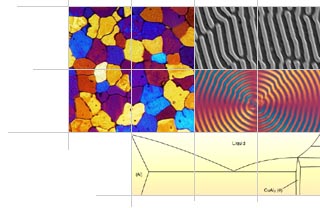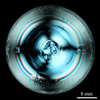Micrograph Library
Browse the libraryAdvanced searchSystemsCompositionsTechniquesKeywordsPhase diagramsHelpPreferencesAbout the micrograph libraryTerms of useContribute micrographs!FeedbackLinksCredits Print this page

Full Record for Micrograph 568

[103 KB]
View micrograph
.. in new window
View micrograph and record
.. in new window
You can also view and download the micrographs on Flickr
- Micrograph no
- 568
- Brief description
- Strain induced birefringence in a thermoformed PET cup
- Keywords
- alignment, birefringence
 , cup, drawing
, cup, drawing  , polyester, polyethylene terephthalate (PET), polymer
, polyester, polyethylene terephthalate (PET), polymer  , strain
, strain  , thermoforming
, thermoforming - Categories
- Polymer
- System
- Polyethylene terephthalate (PET)
- Composition
- Not specified
- Standard codes
- Reaction
- Processing
- The cup is formed by thermoforming; pressing a plug into a heated sheet of PET
- Applications
- The principle use of poly(ethylene terephtalate) is in the packaging of soft drinks. The resulting bottles are shatterproof, impermeable to the carbon dioxide (PET is amorphous), and can withstand pressure.
- Sample preparation
- Technique
- Cross-polarised light microscopy
- Length bar
- 8 mm
- Further information
- The base of the cup is the least strained part of the sheet. Nevertheless, residual strain, increasing with radius, is evident when the specimen is viewed between crossed polars. The polymer chains are more highly aligned where the strain is greatest and this leads to greater birefringence (rotation of polarised light). Hence a circumferential pattern of colours is observed. If heated above the glass-transition temperature of PET (70-80 deg C), the cup will tend to retract towards its unstrained form of a sheet. The dark 'Maltese cross', spreading out horizontally and vertically from the centre, indicates the extinction directions or the orientations of the two polarising films, where the intensity of transmitted light is lowest. Note: most clear plastic cups are made from polystyrene (PS).
- Contributor
- J A Curran
- Organisation
- Department of Materials Science and Metallurgy, University of Cambridge
- Date
- 03/10/02
- Licence for re-use
 Attribution-NonCommercial-ShareAlike 4.0 International
Attribution-NonCommercial-ShareAlike 4.0 International

